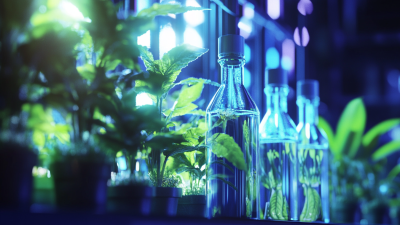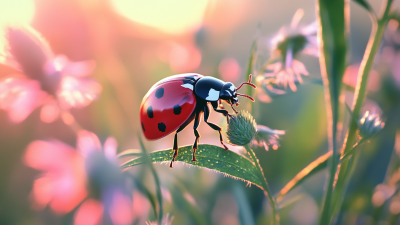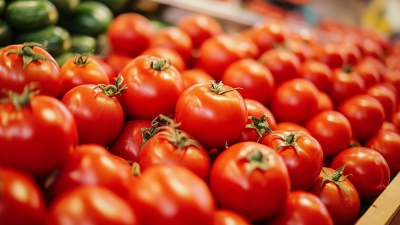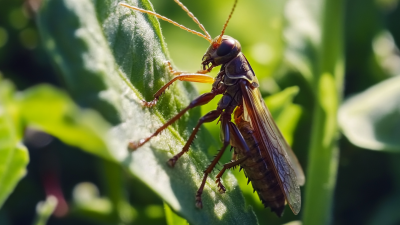 0551-68500918
0551-68500918 





As farming practices keep changing, it’s pretty clear that Chemical Weed Control has become a key part of how we boost crop yields and promote sustainable farming. I came across a report from the Food and Agriculture Organization that predicts the global herbicide market could hit around USD 41.6 billion by 2025. That just shows how much we’re relying on chemical solutions lately to deal with weeds and get better productivity.  Innovation Meiland (Hefei) Co., LTD. is really leading the way in this space, focusing on developing new pesticides and formulations that align with what modern agriculture needs. They’re using cutting-edge tech to make chemical weed control more effective but also environmentally friendly — a balancing act that’s super important for sustainable farming. Thinking about the role of chemical weed control isn’t just about increasing crop yields; it’s also a reminder that we need to be responsible with how we use these chemicals if we want farming to stay viable in the long run.
Innovation Meiland (Hefei) Co., LTD. is really leading the way in this space, focusing on developing new pesticides and formulations that align with what modern agriculture needs. They’re using cutting-edge tech to make chemical weed control more effective but also environmentally friendly — a balancing act that’s super important for sustainable farming. Thinking about the role of chemical weed control isn’t just about increasing crop yields; it’s also a reminder that we need to be responsible with how we use these chemicals if we want farming to stay viable in the long run.
You know, Chemical Weeding—using herbicides to keep out those unwanted plants—really plays a huge role in modern farming. The whole science behind it is pretty fascinating. Basically, herbicides are designed to target specific parts of the plants’ biology—like special enzymes or pathways—that are key for their growth. This way, farmers can wipe out weeds effectively without hurting their crops too much. That kind of precision is what makes chemical weeding such a go-to method if you want to boost your crop yields.
Now, when you’re adding chemical weeding into your farming routine, it’s important to pay attention to the timing and the right amount of herbicide. Applying at the right growth stage—both for your crops and weeds—can really make a difference in how effective it is, and it helps keep the good stuff in the ecosystem safe. Also, don’t forget to always follow the instructions on the label—that’s key to staying safe and being environmentally responsible.
To make things more sustainable, think about combining chemical weeding with other techniques like crop rotation or cover cropping. These methods can really boost soil health and cut down your reliance on chemicals, creating a more balanced and healthy farm system. By understanding how chemical weeding works and keeping these tips in mind, farmers can not only improve their yields but also promote better, more sustainable farming practices.
You know, chemical weeding has really become a key part of modern farming these days. It offers a bunch of benefits that can seriously boost crop yields. I read a report from the Food and Agriculture Organization that says managing weeds effectively can bump up productivity by as much as 30%. That’s pretty huge, especially in fields where weeds can quickly overtake young plants, stunting their growth and cutting into the harvest. Using herbicides not only helps get rid of weeds faster but also cuts down on the time and effort farmers need to spend on manual weeding. This means they can focus their resources somewhere else—like paying attention to the crops themselves instead of fighting weeds all day long.
And here's the interesting part—mixing chemical weeding with more sustainable farming techniques actually shows some promising results. There was this study in the Journal of Agricultural Science that found combining herbicides with crop rotation and cover cropping can really improve soil health and make farms more resilient in the long run. Plus, when farmers use targeted herbicides, they don’t have to worry so much about harming other plants or losing diversity—things that are super important for keeping ecosystems balanced. Overall, this strategic way of farming allows producers to get really high yields while still sticking to eco-friendly practices, which ultimately benefits everyone—food security, the environment, you name it.
You know, chemical weed controlhas become pretty common in modern farming. Farmers use it as a go-to way to handle those stubborn weeds that can really threaten their crops. But, honestly, the widespread use of these Chemical Herbicides isn’t all sunshine and rainbows — there are some serious risks involved that we really need to think about if we’re aiming forsustainable agriculture. One big issue is runoff; when chemicals wash into nearby streams and lakes, they can mess up aquatic life really badly. Some delicate species might even start disappearing because of this toxic exposure.

And then, there’s the long-term stuff to worry about. Over time, weeds can become resistant to these herbicides, which means farmers might have to use more, or turn to stronger chemicals — kind of like a vicious cycle that’s tough to break. It’s not great for the environment, obviously. That’s why a lot of folks in agriculture are now pushing for smarter, integrated weed management methods. Things like cultural practices, mechanical removal, and biological controls can really cut down the need for relying heavily on synthetic chemicals. By mixing these approaches, farmers can protect their crops AND help keep the ecosystems healthy — it’s a win-win, honestly.
Chemical weeding definitely plays a pretty important role when it comes to sustainable farming. It’s a key way to keep weed numbers down, especially since they can really threaten your crop yields. As farming tech keeps advancing, we’re seeing some pretty cool new methods pop up—like these small laser weeders that university teams have been working on. The idea is to make weed control more efficient without just relying on old-school herbicides. This kind of tech helps promote more precise farming, which is better for the environment and still keeps productivity high.

If you look at the market stuff, recent reports suggest that the global pesticide market is expected to jump from about $82.6 billion in 2024 to roughly $113.3 billion by 2031—that’s a solid growth rate of around 5.4% per year. Basically, it shows that weed control is still super important for farming success. Experts are also saying that the future lies in mixed approaches—combining chemical methods with biological ones—to keep crops healthy while being more sustainable. By jumping on these new techniques, farmers can protect their crops from weeds while also doing their part for the planet. It’s all about finding smarter, more balanced ways to farm smarter, not harder.
Lately, there's been a lot of talk in the farming world about how chemical weeds control impacts both crop yields and the planet. You know, while those chemical herbicides do a pretty good job of keeping weeds in check, many folks are starting to wonder about the environmental risks, soil health, and the loss of biodiversity they can cause. Farmers and companies like Innovation Meiland (Hefei) Co., LTD. are now exploring more sustainable ways to farm—thinking less chemical, more natural and eco-friendly. The goal is to keep the crops coming without hurting the environment too much.
Things like crop rotation and planting cover crops are gaining popularity because they help improve soil health naturally and also help reduce weeds. Plus, there are some pretty promising eco-friendly herbicides made from natural ingredients, which can control weeds without the harsh chemicals we’re used to. At Meiland Stock, we’re really committed to researching and developing innovative products that fit into these sustainable farming practices. By focusing on environmentally responsible solutions, we’re hoping to help farmers boost their yields while also protecting our ecosystems — finding that sweet spot between productivity and sustainability in agriculture.
| Weeding Method | Impact on Crop Yields (%) | Sustainability Rating | Cost per Acre ($) | Environmental Impact |
|---|---|---|---|---|
| Chemical Weeding | 20-30% | Low | 100-150 | High |
| Organic Mulching | 10-25% | High | 50-100 | Low |
| Cover Cropping | 15-20% | High | 40-80 | Minimal |
| Hand Weeding | 5-15% | Moderate | 200-300 | Moderate |
| Integrated Pest Management | 10-20% | Very High | 60-120 | Very Low |
Looking ahead, the future of chemical weed control is really about smarter crop management systems that focus on sustainability and better efficiency. Farmers are under more pressure than ever to boost their yields while keeping the environment in mind, and that's where tech like precision agriculture comes into play. These tools make it possible to target weeds exactly where they are, meaning farmers don’t have to use as much herbicide, which also means less impact on other plants and animals around them. Using things like drones, satellite images, and data analysis, farmers can keep a closer eye on weed growth and make smarter decisions — all while sticking to eco-friendly practices.
On top of that, there's growing excitement around biological weed control methods, which could work hand-in-hand with traditional chemical approaches. For example, biopesticides and cover crops can naturally keep weeds in check and give soil a boost at the same time. Mixing biological solutions with chemical ones isn’t just about upping crop yields; it’s also about creating a tougher, more balanced farm ecosystem. As farmers start to incorporate these new methods, we’re really looking at a shift in how weed management is done — one that aligns better with sustainability goals and the health of our planet.
: Chemical weeding helps increase crop productivity by up to 30%, reduces weed density, and lowers time and labor costs associated with manual weeding, allowing for more efficient resource allocation.
When combined with practices like crop rotation and cover cropping, chemical weeding can improve soil health and contribute to a more resilient farming system.
Targeted herbicides, when used correctly, can minimize the impact on non-target species and help maintain biodiversity, which is essential for ecological balance.
Yes, alternatives include organic solutions such as crop rotation and cover crops, as well as eco-friendly herbicides derived from natural ingredients.
The shift is due to increasing scrutiny over the environmental and health risks posed by chemical herbicides, prompting a focus on sustainable practices that preserve productivity and minimize adverse effects.
Organic solutions like crop rotation and cover cropping can naturally reduce weed pressure and improve soil organic matter, which enhances soil health.
Companies like Innovation Meiland are researching and developing innovative, eco-friendly products that support sustainable agricultural practices while improving crop yields.
By increasing crop yields and supporting sustainable farming practices, chemical weeding plays a vital role in ensuring a reliable food supply and enhancing food security.
Chemical weeding reduces labor costs associated with manual weeding, allowing farmers to save time and allocate their resources more efficiently.
Key concerns include the potential environmental impact, risks to soil health, and threats to biodiversity linked to the use of chemical herbicides.
Chemical weeding plays a pretty big role in modern farming these days. It’s actually a game-changer when it comes to boosting crop yields and keeping things sustainable. If farmers get a good grip on the science behind it, they can really leverage its benefits—like getting more produce—while still keeping an eye on the environmental risks. In this blog, we talk about some of the top perks of using chemicals—like how it makes things more efficient and helps produce higher yields—but we also honestly weigh the possible environmental downsides. We make sure to highlight best practices, so chemical use sticks to sustainable farming principles.
We also take a moment to look at other options out there—like organic and eco-friendly methods—that can be great alternatives for those wanting to cut back on chemicals. Looking ahead, it’s exciting to think about how ongoing innovations in chemical weeding and crop management will help shape a more sustainable future in agriculture. At Innovation Meiland (Hefei) Co., LTD., we’re passionate about developing new pesticides and formulations that aim to support both effective and environmentally responsible farming. We truly believe that by combining science and care, we can help farmers do better while protecting our planet.







